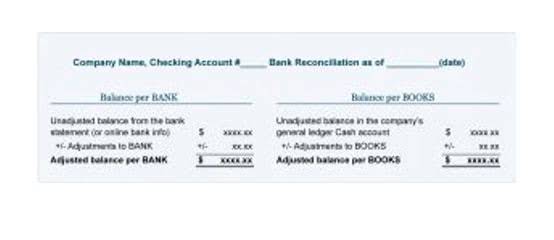
What Is the Difference Between Assets and Plant Assets? The Motley Fool

These fixed assets help companies create income by being part of the production process or by getting rented out. Plant assets represent the asset class that belongs to the non-current, tangible assets. These assets are used for operating the business functions and generating revenues in the financial plant assets are defined as: periods. Plant assets are a group of assets used in an industrial process, such as a foundry, factory, or workshop. These assets are classified as fixed assets if their cost exceeds the capitalization threshold of a business, and they are expected to be used for more than one reporting period.
Navigating Crypto Frontiers: Understanding Market Capitalization as the North Star

It provides transparency and accountability to stakeholders and assists in making informed decisions regarding investments, lending, and overall business operations. By accurately recording plant assets in accounting, businesses can track their investments and assess the value of their assets over time. Additionally, it allows for proper calculation of depreciation expense and provides transparency and accountability in financial reporting. Proper management and accounting of plant assets are crucial for a company’s financial stability and growth. It involves various aspects, such as the acquisition, recording, depreciation, and disposal of these assets.

Subsequent Costs
Generally, plant assets are among the most valuable company assets and tend to be relied on greatly over the long term. As such, these assets provide an economic benefit for a significant period of time. In Exhibit 4, note how the asset’s life begins with its procurement and the recording of its acquisition cost, which is usually in the form of a dollar purchase. Then, as the asset provides services through time, accountants record the asset’s depreciation and any subsequent expenditures related to the asset. We discuss the first three steps in this chapter and the disposal of an asset in Chapter 11. The last section in this chapter explains how accountants use subsidiary ledgers to control assets.
Asset Lifespan and Revenue Generation
This classification is rarely used, having been superseded by such other asset classifications as Buildings and Equipment. This ensures that the value of the asset is accurately represented over its useful life. The company would now adjust the carrying amount to £90,000, and depreciation would be calculated using the revalued amount. If the asset’s value is found to be impaired, the carrying amount would be reduced.
- The purpose of depreciation is to “charge out” a portion of the plant assets which have been used during the accounting period to generate business revenue.
- PP&E is listed on a company’s balance sheet minus accumulated depreciation.
- For the past 52 years, Harold Averkamp (CPA, MBA) hasworked as an accounting supervisor, manager, consultant, university instructor, and innovator in teaching accounting online.
- Depreciation expense — calculated in several different ways — is then carried through to the income statement and reduces net income.
- These tangible long-term assets are integral to the operational framework of a company and, as such, must be effectively managed to maximize their productive output and potential resale value.

It’s impossible to manufacture products without equipment and machinery, or a building to house them. If the equipment or machinery in question is a necessary part of your business operation, it’s a plant asset. Plant assets are long-term physical items a company owns and uses to make its products, like buildings, machines, and equipment. Taking care of these assets makes sure they last longer and work better. Once these items are used in production or other operations, they’re treated as plant assets on the books.

Depreciation methods can include straight line or declining balance. For example, a company purchases a new manufacturing machine for £100,000. When researching companies, the financial statement is a great place to start. The Ascent is a Motley Fool service that rates and reviews essential products for your everyday money matters.
- Even the smallest business has assets, which can include everything from cash in the bank, to the computer you’re working on, to the building where you manufacture piggy banks.
- These assets are not meant for resale and are expected to provide economic benefits for several years.
- Plant assets are goods that are considered long-term assets because of their high price or worth, even if the assets depreciate.
- In business, assets can take several forms — equipment, patents, investments, and even cash itself.
- Noncurrent assets include intangible assets, such as patents and copyrights.
- Knowing when and how much to invest in improvements helps manage capital expenditures wisely.
What is asset? Definition, Explanation, Types, Classification, Formula, and Measurement
These are physical assets that are expected to be financially useful to a company for more than a year. A plant asset can be defined as any asset that can be utilized to produce revenue for the company. Plant assets, also known as fixed assets, are any asset directly involved in revenue generation with a useful life greater than one year. Named during the industrial revolution, plant assets are no longer limited to factory or manufacturing equipment but also include any asset used in revenue production.
Reporting Plant Assets in Financial Statements
Examples of plant assets include factory machinery, delivery trucks, computers, desks, and manufacturing tools. Depreciation spreads the cost of a plant asset over its useful life. This https://www.bookstime.com/ process matches part of the asset’s cost to each year it helps generate revenue. There are several methods to calculate depreciation, but all reflect how assets lose value over time.
Related AccountingTools Courses
One distinguishing feature of plant assets is that they are not meant for resale. Unlike inventory or stock in trade, plant assets are acquired with the intention of using them in the production process or to support the company’s operations. These assets are expected to have a useful life that extends beyond the current accounting period. Plant assets, also known as fixed assets, are tangible assets that are used in the production process or to generate revenue for a company over an extended period of time. These assets are not meant for resale and are expected to provide economic benefits for several years. They include machinery, equipment, and buildings needed to make products or provide services.
Balance Sheet
Depending on the industry, plant assets may make up either a very substantial percentage of total assets, or they may make up only a small part. Industries like heavy shipping or oil extraction stand to employ a greater percentage of plant assets than industries like software, in which teams may be remote and sometimes globally distributed. The best way to manage your assets is to use an accounting software application that simplifies the entire asset management process from the initial acquisition to asset disposal.
© 2021 Oak Tree. All rights reserved.


Comments are closed.